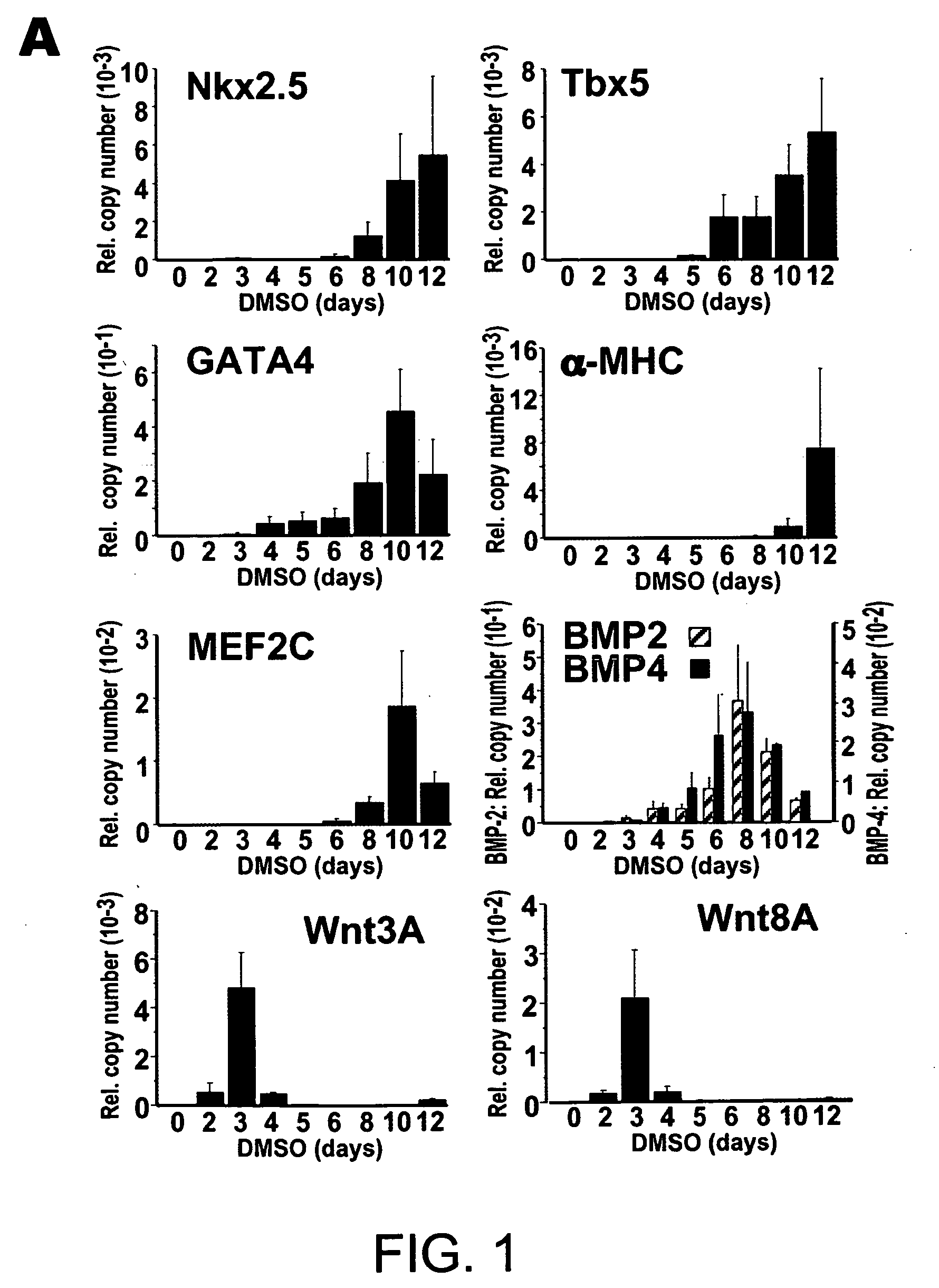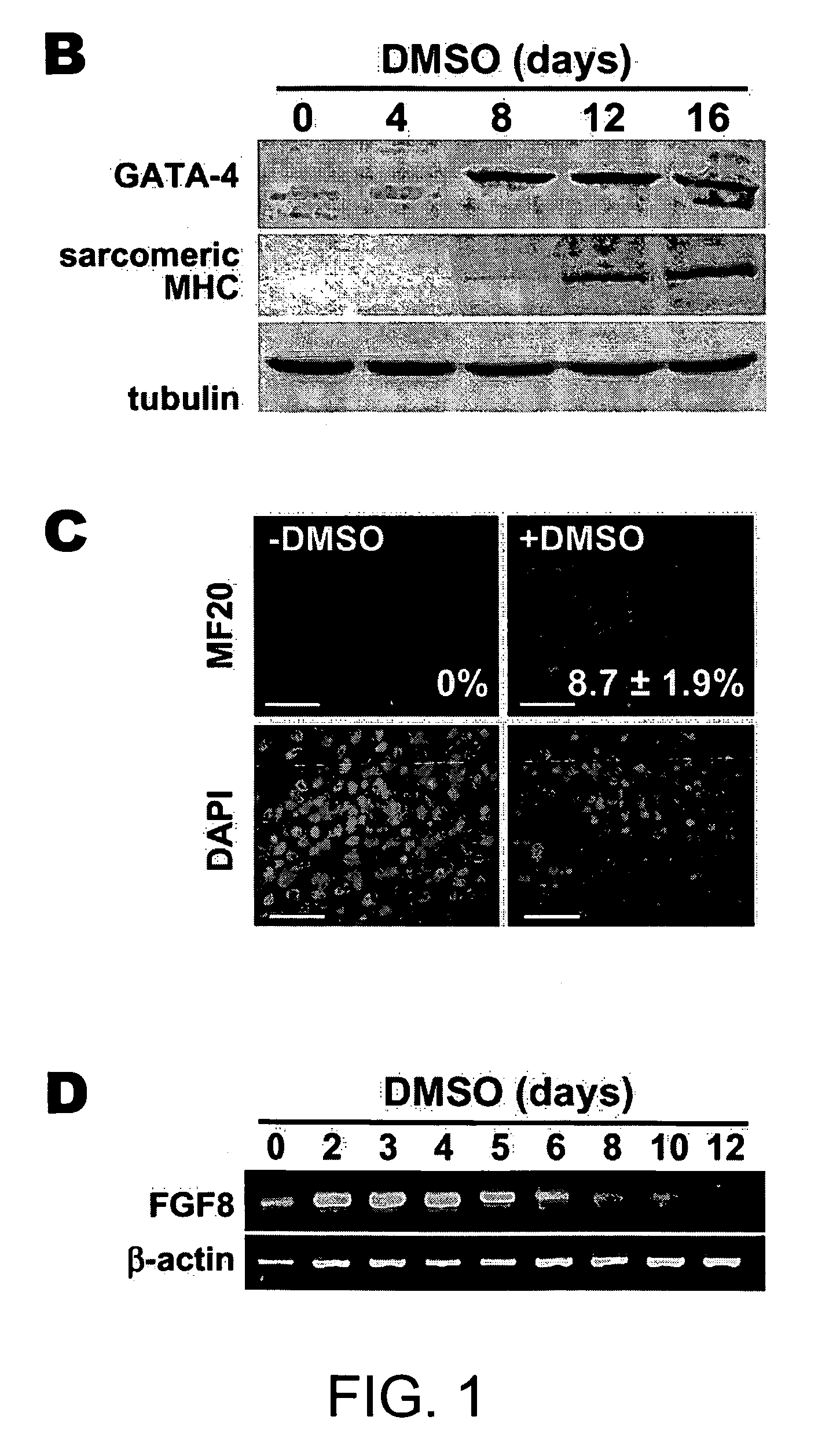Wnt as a factor for cardiac myogenesis
a myogenesis and factor technology, applied in the field of cell biology, molecular biology, medicine, can solve problems such as finding an effective therapeutic method, and achieve the effect of restoring structural functional integrity to the injured myocardium
- Summary
- Abstract
- Description
- Claims
- Application Information
AI Technical Summary
Benefits of technology
Problems solved by technology
Method used
Image
Examples
example 1
Differentiation and Transfection
[0190] Cells were grown on 10 cm dishes in α-minimal MEM; Invitrogen) supplemented with 10% fetal bovine serum (FBS) (Hyclone), streptomycin. To induce differentiation, cells were seeded at a 1:40 dilution with α-MEM, DMSO. For each experiment, cardiomyocyte differentiation was apparent in the control spontaneous beating, starting day 9 to 10. To obtain stable transformants incorporating GSK-vector control, cells were transfected using Lipofectamine2000 (Invitrogen) and medium containing 500 μg / ml Geniticin (Invitrogen). After 10-14 day, 60 colonies were picked and screened by RT-PCR. To detect exogenous GSK-3β selectively, the 5′ primer corresponded to the N terminus and the 3′ primer to the H. influenza hemagglutinin epitope tag.
example 2
Reverse-Transcriptase Polymerase Chain Reaction (RT-PCR)
[0191] RNA was isolated using TRIzol (Invitrogen). RNA (0.1 μg) was subjected to quantitative RT-PCR using the TaqMan One-step RT-PCR Master Mix Biosystems); the RT and PCR were run sequentially using a 7700 Sequence Detector (Applied Biosystems). Copy number for each transcript was expressed relative to that of glyceraldehyde-3-phosphate dehydrogenase (GAPDH), used as a constitutive control. RT-PCR for FGF8 and β-actin was done as described by Lee et al., 2000).
example 3
[0192] Cells were seeded on glass cover slips and cultured with or without DMSO for 3 days. Cells were fixed with 4% paraformaldehyde and penneablized with 0.2% Triton X-100 for 5 min. To detect phosphorylated β-catenin, cells were incubated overnight with rabbit antibody to phoshpo-β-catenin (Ser33 / Ser37 / Thr4l; Cell Signaling) in Tris-buffered saline, 3% bovine serum albumin, then for 1 hr with goat antibody to rabbit IgG conjugated with Alexa Fluor 488 (Molecular Probes). Immunostaining for sarcomeric myosin heavy chains (MHC) was performed using fluorescein isothiocyanate-conjugated MF20 antibody (Oh et al., 2001). Nuclei were counterstained with DAPI.
PUM
| Property | Measurement | Unit |
|---|---|---|
| Cell angle | aaaaa | aaaaa |
Abstract
Description
Claims
Application Information
 Login to View More
Login to View More - R&D
- Intellectual Property
- Life Sciences
- Materials
- Tech Scout
- Unparalleled Data Quality
- Higher Quality Content
- 60% Fewer Hallucinations
Browse by: Latest US Patents, China's latest patents, Technical Efficacy Thesaurus, Application Domain, Technology Topic, Popular Technical Reports.
© 2025 PatSnap. All rights reserved.Legal|Privacy policy|Modern Slavery Act Transparency Statement|Sitemap|About US| Contact US: help@patsnap.com



